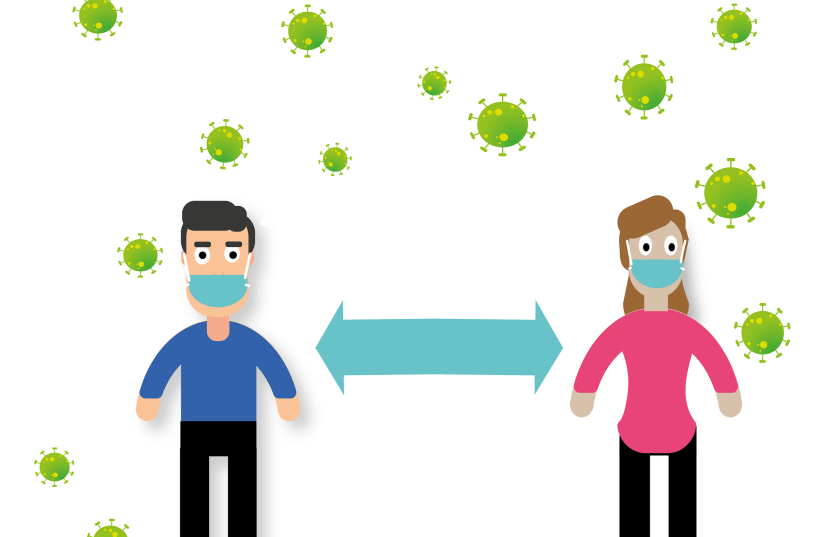We dodged a corona bullet a few weeks ago.
For most of the past year, my wife, Jody, and I have erred on the side of caution when it comes to staying safe from COVID-19. We have scrupulously maintained social distance, eschewed most social gatherings, and insisted that anyone coming into our home, including our adult children, mask-up when indoors. Since May, we’ve eaten all our family meals outside on our terrace.
Now, with winter coming, I’m at a loss as to what to do when the kids want to come visit. If it’s too cold or rainy outside, are we going to go back to the situation we had in the spring where we were completely isolated from our children for several months? I don’t think I could stand that.
Mind you, our kids are not rule-breaking party people. They want to stay healthy, too. Could we relax the guidelines, just a bit, I wondered, and enact some sort of compromise to be together indoors?
A few weeks ago, the new season of Grey’s Anatomy came out. Both Jody and our daughter, Merav, are big fans of the show, which now in its 17th season has embraced a full-on pandemic narrative. Would Jody like to come over, Merav asked, and they’ll watch the opening double episode together?
Jody and I discussed it. They’d have to wear masks the entire time and keep the windows open. Still, they would be indoors, together on the same couch, for clearly more than 15 minutes. Our antimicrobial, nanoparticle, zinc-infused Sonovia masks are good, but they aren’t 100% foolproof.
And yet, we so craved some sense of normalcy.
Two days after they had their first in-person extended indoor get-together in months, Merav WhatsApped us. She wasn’t feeling well. Fever, body aches, dry cough.
My heart sank.
When Merav’s symptoms hadn’t abated after another day, she went to get a COVID test. Jody and I, meanwhile – already anticipating the worst – researched quarantine regulations. Who would walk the dog? What rooms would we sleep in?
Less than 12 hours later, Merav got her results back. Negative. She had something, but it wasn’t corona.
We all breathed a sigh of relief, although I insisted we give it another few days to be sure – a not insignificant portion of PCR nasal swab tests come back with false negatives.
A week later and we were all fine. Still, it was a close call that shook us out of our corona fatigue.
“It’s really important to understand that the coronavirus hitches a ride on our trust and our love for our family and friends,” wrote Isaac Chotiner in The New Yorker. “It’s actually the people we trust most whom we’re most likely to infect and who are most likely to infect us, because we’re not going to take [the] same precautions.” The idea that we were toying with just a few days previously – that we could move our gatherings indoors for the winter – now seemed hopelessly off the table.
OR WAS it? We sprang into creativity mode.Could we still get together indoors, just not for meals? A masked board game, perhaps? But that would mean being in the same space for more than 15 minutes, just like the Grey’s Anatomy scare.
How about if Jody and I were to sit at one end of the table, with the kids far away at the other? Or we could implement a “staggered eating” protocol, where one side of the table wears masks while the other side is eating, then we reverse.
But could anyone really keep to such an arrangement scrupulously? Moreover, doesn’t the virus remain in the air for a few hours, so that any mask removal is risky?
Researchers at the Riken Center for Computational Science and Kobe University in Japan used a supercomputer to model a seating arrangement that would be the least likely to spread infection if a COVID-positive person is in your midst. As reported in The Asahi Shimbun, sitting across the table is bad, they found; speaking to someone at your side by turning your head is even worse, by a magnitude of five. But diagonal spacing reduces the chances of getting hit by virus particles by 75%.
Craig Mod wrote an in-depth article in The Atlantic in September about how he ventilates his home using high-speed fans and open windows to ensure that air is circulating and virus particles can’t build up. Mod created his system to combat mold but notes that it’s applicable to COVID protection, too.
What about adding a HEPA filter to the mix? The jury is out on whether these air purifiers really make a difference, but combined with other mitigation strategies, it could give us some additional peace of mind.
Maybe the best bet would be to buy a couple of those restaurant-grade kerosene heaters and continue our tradition of eating on the terrace even when the temperature plunges.
Or perhaps we should simply skip meals for the next few months and go for bundled-up family dog walks.
THE ONLY thing that seems clear is that the panic those two days in November evoked, when we were kicking ourselves for taking unnecessary chances, was enough to wake us from our pandemic lassitude and set us on a more scrupulous path as we head into the most precarious period of this awful 2020.
With effective vaccines tantalizing close, now is not the time to let down our guard.
As epidemiologist Michael Osterholm remarked pithily but providentially in The New York Times, “This is your COVID year – just get through it – then hope that next year we’ll be in a very different situation.”The writer’s book, Totaled: The Billion-Dollar Crash of the Startup that Took on Big Auto, Big Oil and the World, is available on Amazon and other online booksellers. brianblum.com
